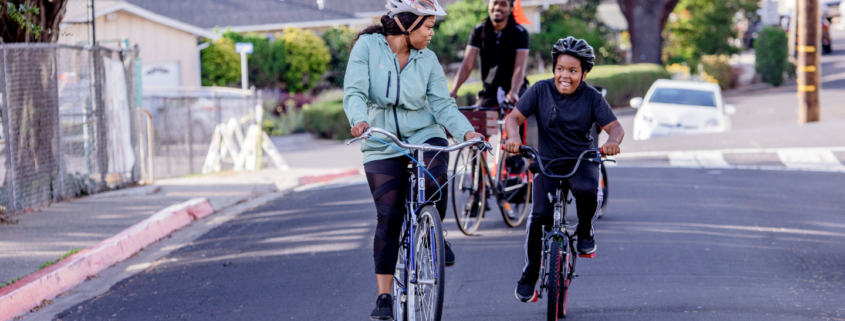New E-Bike Training Resources Come Online
Over the past few months, government and nonprofit groups have published three online e-bike riding resources. We’ve reviewed them all so we can give you an overview.
Three e-bike courses
The training resources were created by the California Highway Patrol (CHP), PeopleForBikes (with the League of American Bicyclists and Bicycle Colorado), and the California Air Resources Board (CARB) E-Bike Incentive Program. All three include basic bike riding information that doesn’t offer much new to an experienced rider of any type of bike. However, all three include some helpful e-bike-specific content.
CHP: Electric Bicycle Safety and Training
In 2022, the California legislature passed AB 1946, which required the CHP to “develop, on or before September 1, 2023, statewide safety and training programs based on evidence-based practices for users of electric bicycles[.]” The result is an 11-module online manual which, confusingly, is not on the CHP website, as required by the statute, and doesn’t come up in a standard Google search.
The CHP course is mostly text and graphics, though it includes a few videos from the League of American Bicyclists. Oddly, there’s one question to answer in the middle. When you reach the end of the modules, there’s a button to get a completion certificate, but the link is broken. This course needs some work.
PeopleForBikes: E-Bike Smart
PeopleForBikes is the bike industry’s advocacy organization. Its E-Bike Smart online training is divided into five modules, each with a short video and multiple-choice questions afterward. The longest videos, at around six minutes each, are Rider Safety and Awareness and Etiquette, which cover safe riding on roads around motor vehicles and on shared biking and walking paths.
Pedal Ahead: E-Bike Safety Basics
In discussions with Pedal Ahead, the administrator for the statewide E-Bike Incentive Program, and CARB, the agency overseeing the program, the training required of voucher recipients has gone from 90 minutes to 30, to the video released on the program website that comes in at just under 12 minutes. The resources section of the website also promises an environmental impact module, yet to be released.
The video-only training covers e-bike -specific issues, such as safe battery charging and locking your bike, but devotes more than half its time to safe and courteous biking riding.
Where they overlap
Much of the content of all three e-bike resources is basic bike safety information because, basically, e-bikes are bicycles, and the same rules for safe and legal riding apply. All three include information about the ABC pre-ride checklist (air in tires/brakes/chain, crank, cogs). The e-bike version is ABC-e Quick Check, including checking the electrical components and charge and also ensuring all quick-release levers are securely closed before riding.
All three trainings also included basic information about e-bike classifications and speeds. And all three include extensive information on how to politely pass and share the road on shared paths, perhaps in a nod to complaints about people on e-bikes riding too fast on paths shared with people walking.
Where they differ
The CHP resource includes information about how to decide if an e-bike is right for you and how to pick a bike, but surprisingly, didn’t include any information about safe battery charging and storage. Not surprisingly, it includes more information about what is and isn’t legal, including citations to California Vehicle Code sections relating to bikes and e-bikes. It also includes some scary statistics about crashes the other trainings didn’t have and appears to put most of the onus for avoiding crashes on the bike rider.
The PeopleForBikes resource has a short but thorough and well-illustrated section on proper battery storage and charging. It’s the only one that tests your knowledge with each module, making it feel more like a training.
The Pedal Ahead video recommends taking a bicycle safety class, a suggestion we heartily endorse. It’s the only training to acknowledge that absorbing a short online training might not give new riders the tools and confidence to get the most out of their e-bike experience. Check your local bicycle coalition for upcoming classes; you might learn something valuable, even if you’ve been riding for years.
Which online e-bike training should you take?
If you absorb information best by reading, the CHP training might be best for you. However, it leaves out essential information on battery charging, and its emphasis on legal restrictions and crash statistics may discourage some riders.
For visual and auditory learners, the Pedal Ahead video provides constant narration while illustrating each point, and E-Bike Smart also provides video (though with less narration). If you’d like a little gamification, E-Bike Smart provides bike-sized nuggets and the satisfaction of getting scored.
Bottom line: Each of these resources includes helpful information and could be a good place to start, especially if you’re new to riding a bike. But there’s no substitute for in-person training with a licensed cycling instructor.





